A really good film or magazine article — or, these days, an Instagram account — can be enough to inspire a trip’s itinerary. On my first trip to Japan in 2023, it was an old camera from 1963 that I’d bought off eBay that did it. I came armed with a Google Map thickly skewered with pinned locations — coffee shops, tonkatsu joints, vinyl bars, bookstores — but moving between these points, I noticed an understated fixture of the city: vending machines.
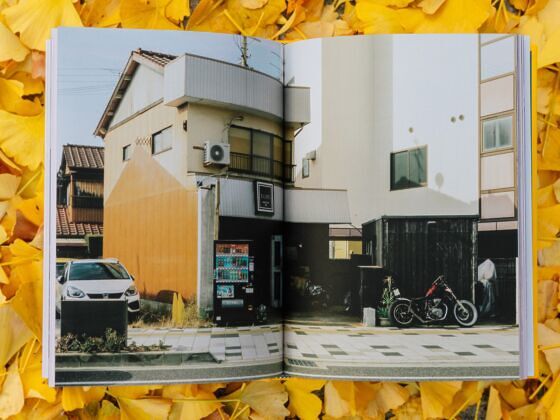

A New Photo Book Explores The Unending Variety and Allure of Japan's Vending Machines
Vending machines are everywhere in Tokyo, and in the rest of Japan too. There are some 3.9 million vending machines in operation in the country for the approximately 124 million residents, or about one for every 30 citizens. But it’s not just a numbers thing. Vending machines in Japan come in all shapes, colors, and sizes. These were reasons enough to point my camera at them as something to do while walking the city by myself. Back to that camera — the Olympus PEN-F is a 35mm half-frame camera, meaning it divides every shot on a roll of film into two photos. With this machine in my hand, the project I assigned myself was to fill an entire roll of film with vending machines; 72 photos, 72 machines.
With this idea overlaid on top of my trip, my travel habits started to look different. I sought out new routes between A and B, wandered down alleys, and ventured into residential neighborhoods I wouldn’t have otherwise walked through. I still visited the city’s famous places, but while everyone posed for selfies in front of Sensō-ji, I could be found on the edge of the temple grounds with my eye on the drink dispensers.
The thing about old cameras is that they don’t always work the way you expect them to. A lot of my photos came out blurry, the focus ever so slightly off. But there were enough keepers to know I’d found a subject interesting enough to keep pursuing. Vending machines drew me into all parts of Tokyo and they drew my eye toward the hundreds and thousands of details that, combined, make a city — the color of the tiles on the buildings in one neighborhood versus another, how quickly a busy commercial area blends into a quiet residential one, how urban negative space is utilized (in Tokyo, it’s all utilized).
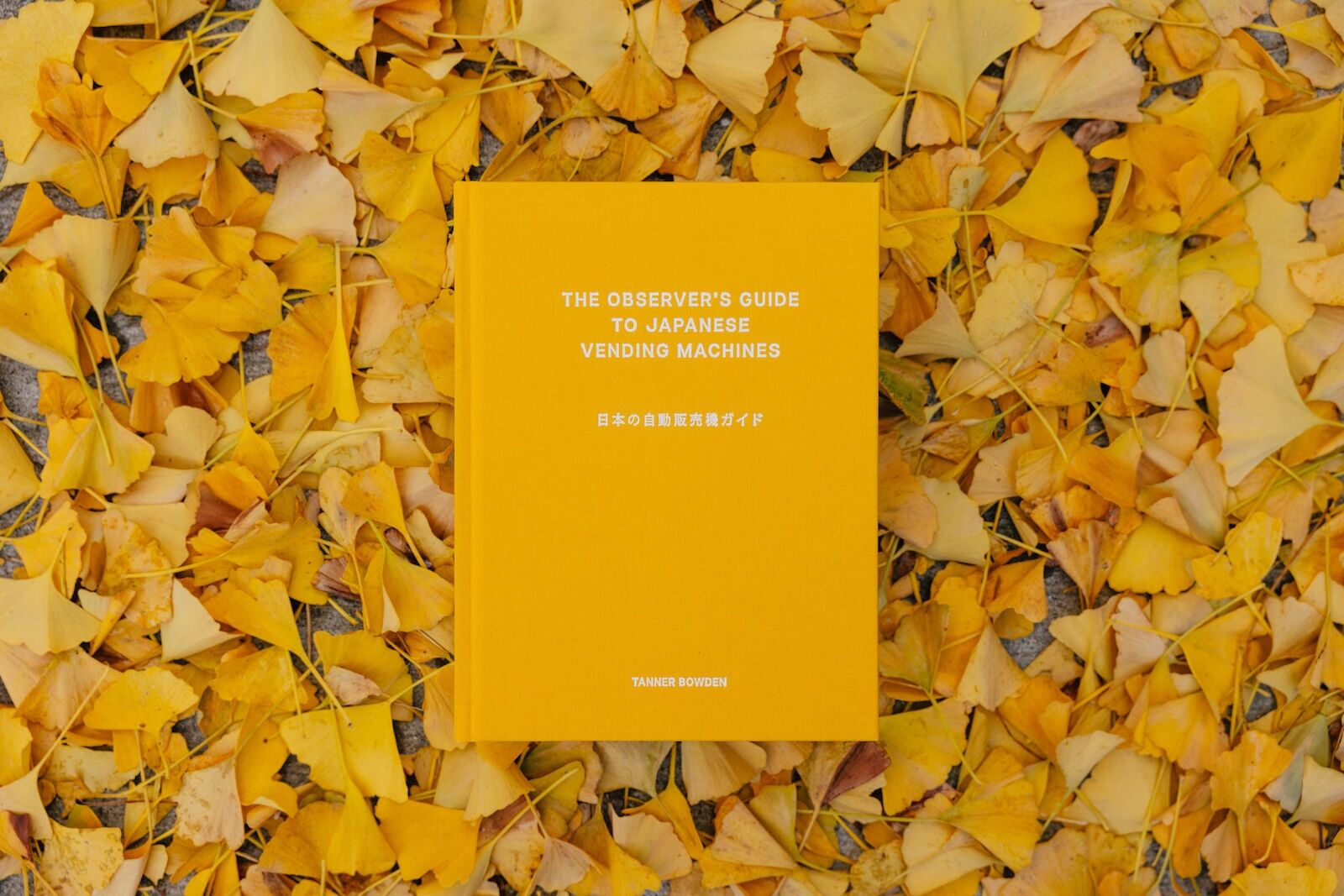
The Observer’s Guide to Japanese Vending Machines. Photo: Tanner Bowden
On a follow-up trip later that year, I knew I wanted to find more vending machines and take their photos. If it sounds like I’m anthropomorphizing, that’s because it’s hard not to when you come across a Coke machine standing underneath its own awning outside the village market (or maybe I’ve simply read too much Murakami). On this second trip, I explored outside the city and found that even in the small villages and along the hiking paths drawn across the Kii Peninsula, vending machines abound. During a long, cold day of hiking, a warm can of coffee can be a real morale saver (yeah, Japanese vending machines serve hot drinks too).
Just as that camera inspired me to take photos of vending machines, the photos that I returned home with inspired me to publish “The Observer’s Guide to Japanese Vending Machines“. The images that made it into the book are the ones that, I believe, do the same thing that the machines did for me once I started to notice them: they draw attention to the basic physical organization of a place that we all feel when we’re there but don’t necessarily notice, the things that give Tokyo and the other places I visited in Japan a little bit of their indelible character.
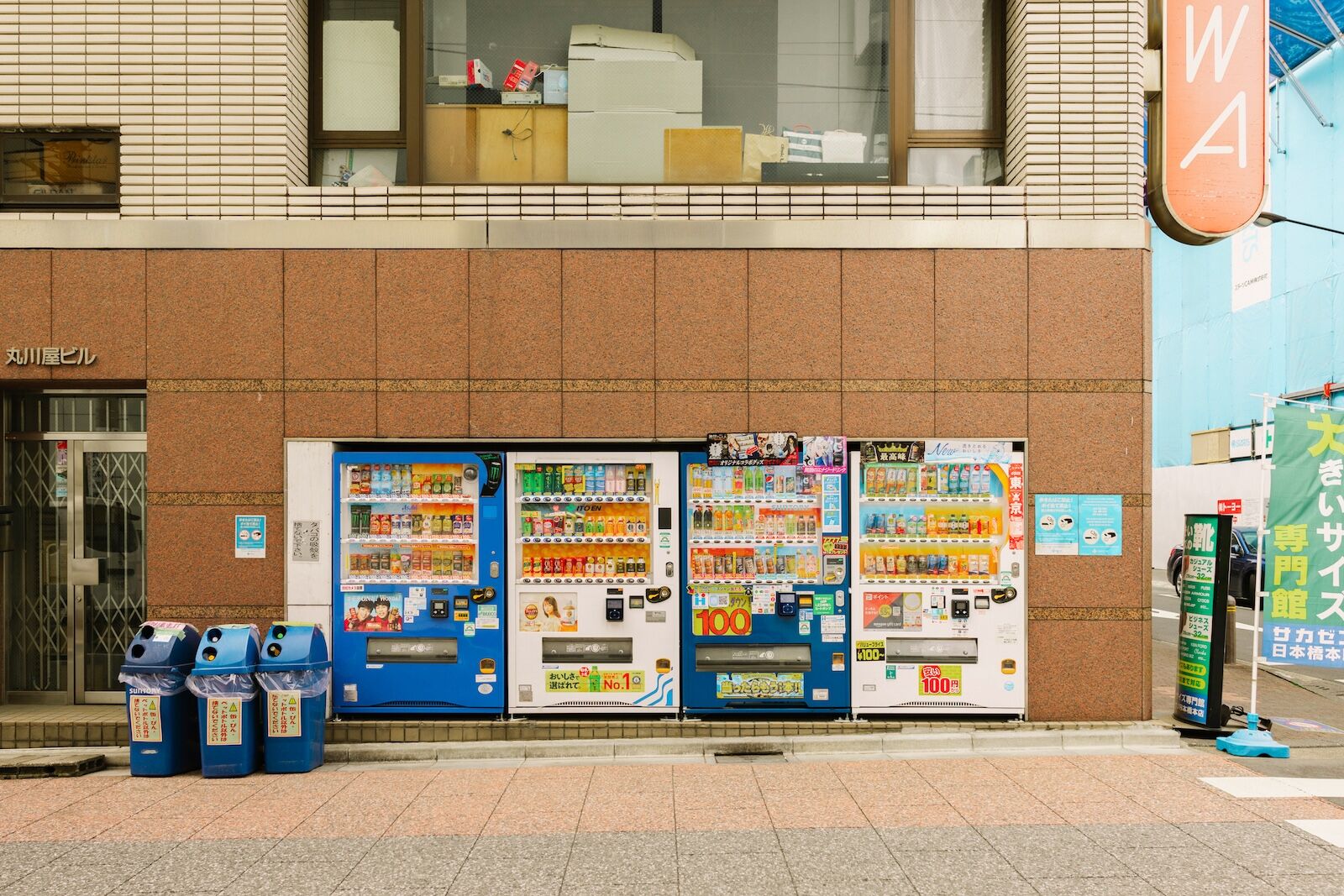
Groups of vending machines are so common in Tokyo’s busy areas that they can be easy to overlook. Photo: Tanner Bowden
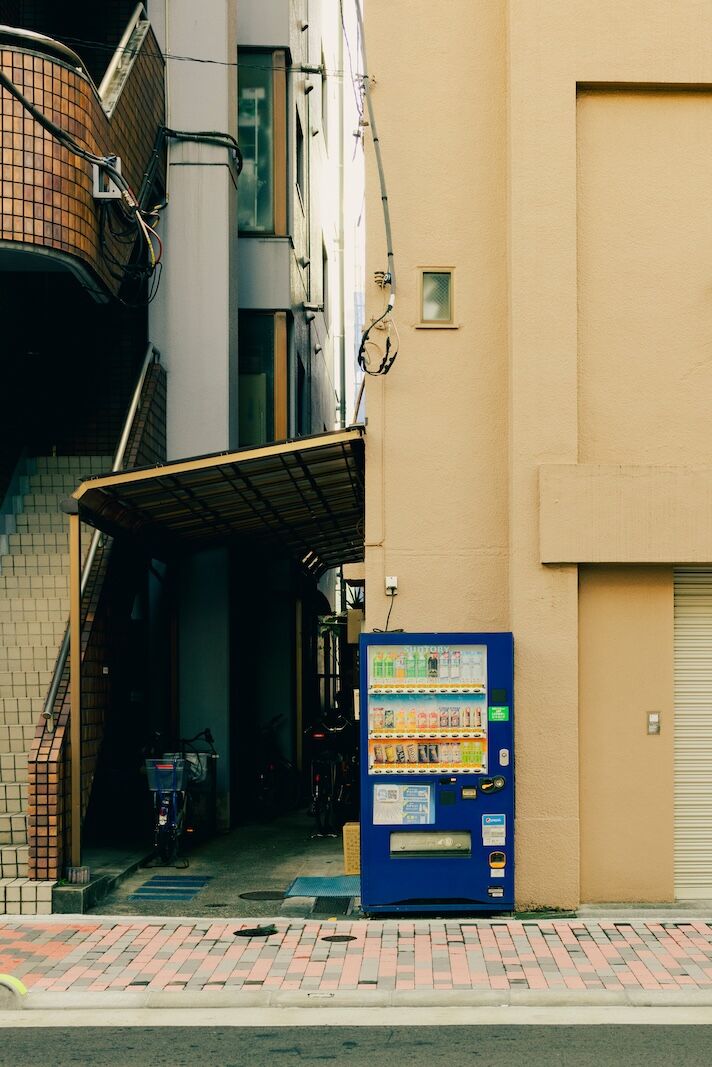
In residential neighborhoods, some vending machines are seemingly positioned in private driveways. Photo: Tanner Bowden
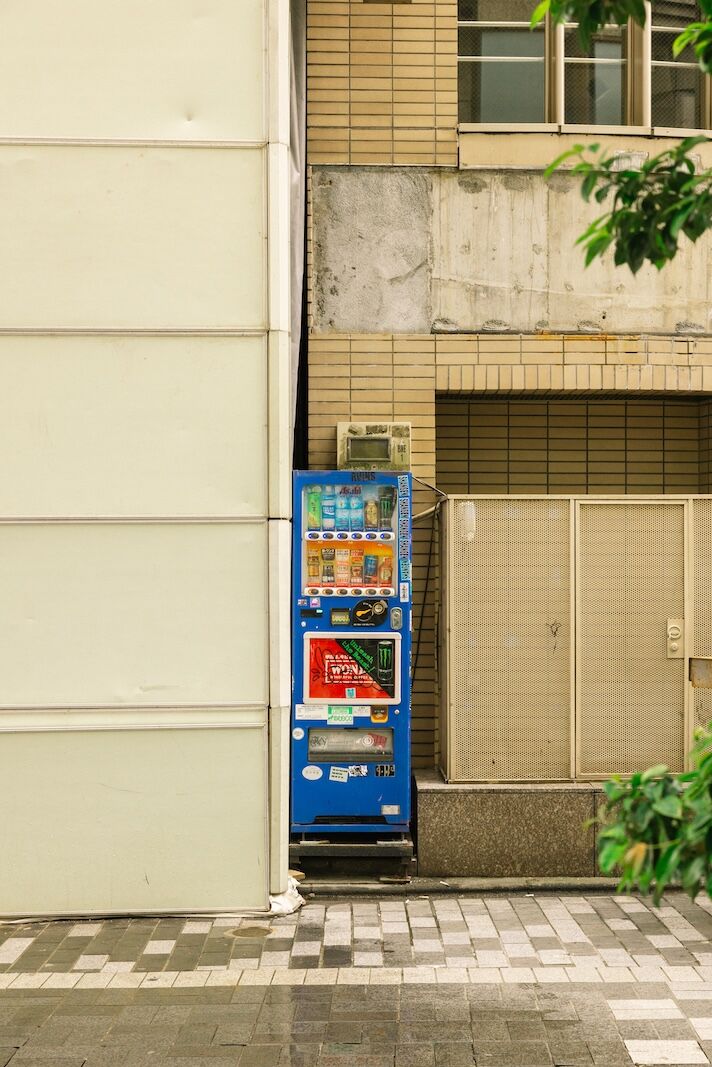
For the sake of coffee, green tea, and other drinks, no amount of leftover space is too small. Photo: Tanner Bowden
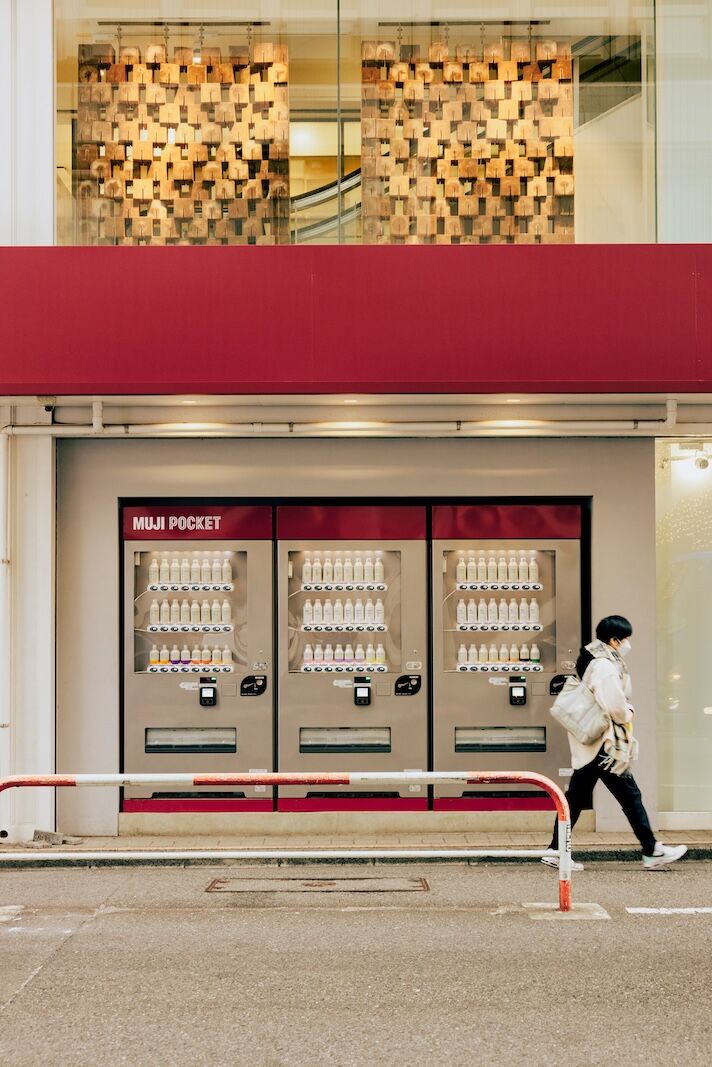
One-of-a-kind vending machines aren’t hard to come by either. At Muji’s store in Shinjuku, the Japanese brand sells drinks from its beverage line. Photo: Tanner Bowden

Sometimes it seems like the city’s most basic infrastructure elements were designed with vending machines (and an accompanying recycling bin) in mind. Photo: Tanner Bowden

Even far from the nearest town I encountered vending machines. This one was at the end of a logging road in the Kii Mountains where it intersected the hiking trail I was walking. Photo: Tanner Bowden
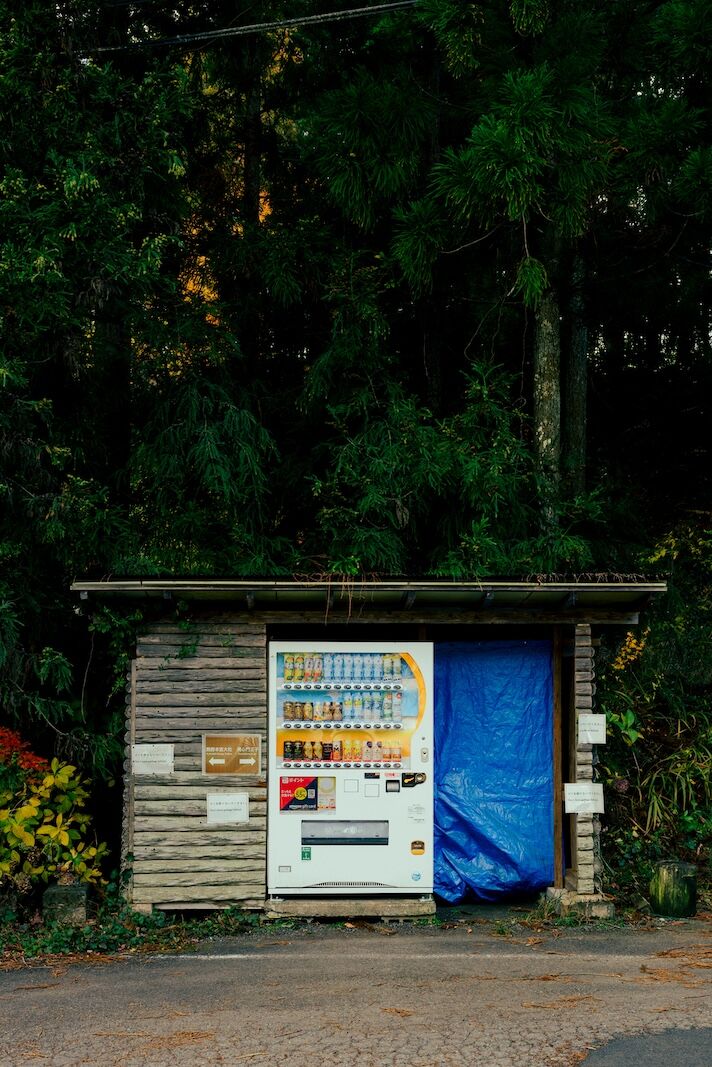
Vending machines in Japan are generally well maintained. Some like this one even get their own protection from the elements. Photo: Tanner Bowden
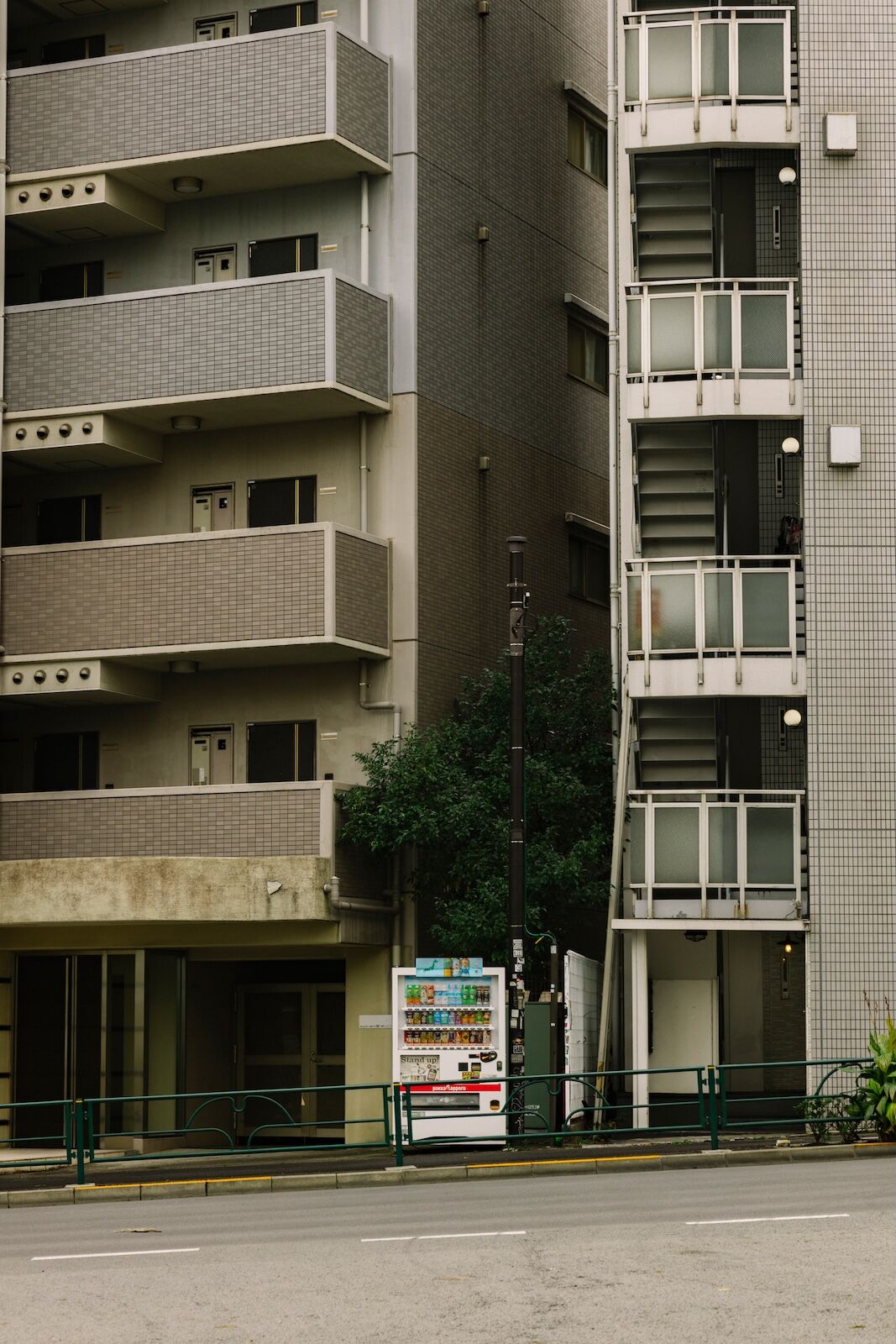
Scale is a hard concept to grasp in a city as sprawling as Tokyo. Vending machines like this one help. Photo: Tanner Bowden
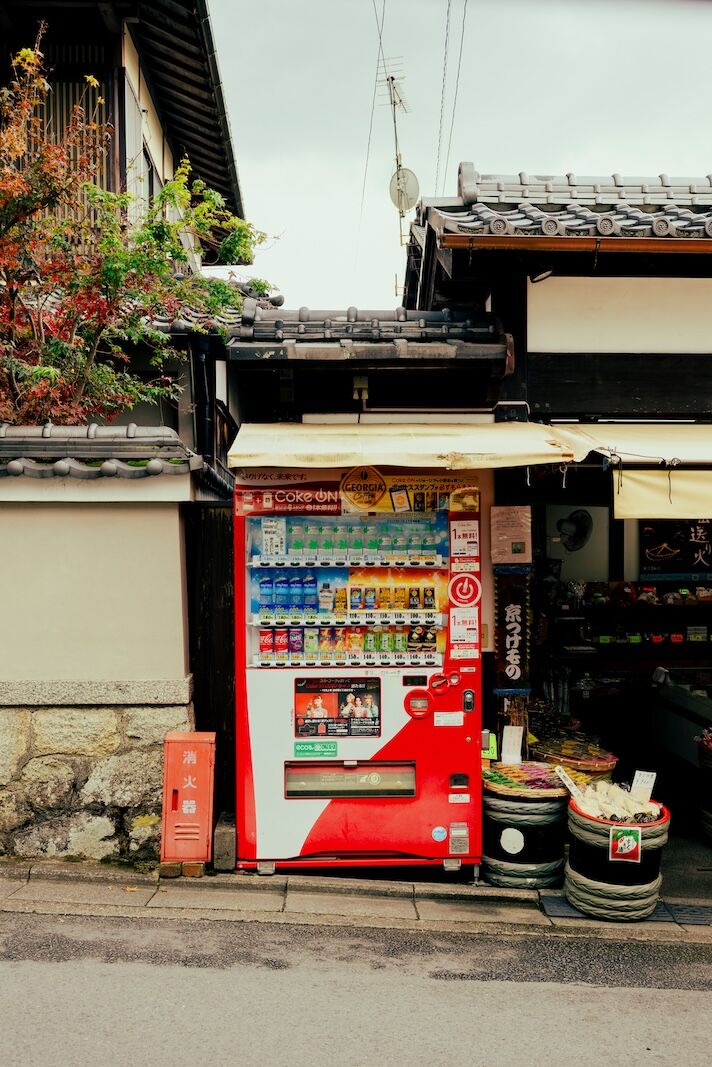
In areas dominated by more traditional architecture like this street in Kyoto, vending machines offer a modern (and colorful) contrast. Photo: Tanner Bowden
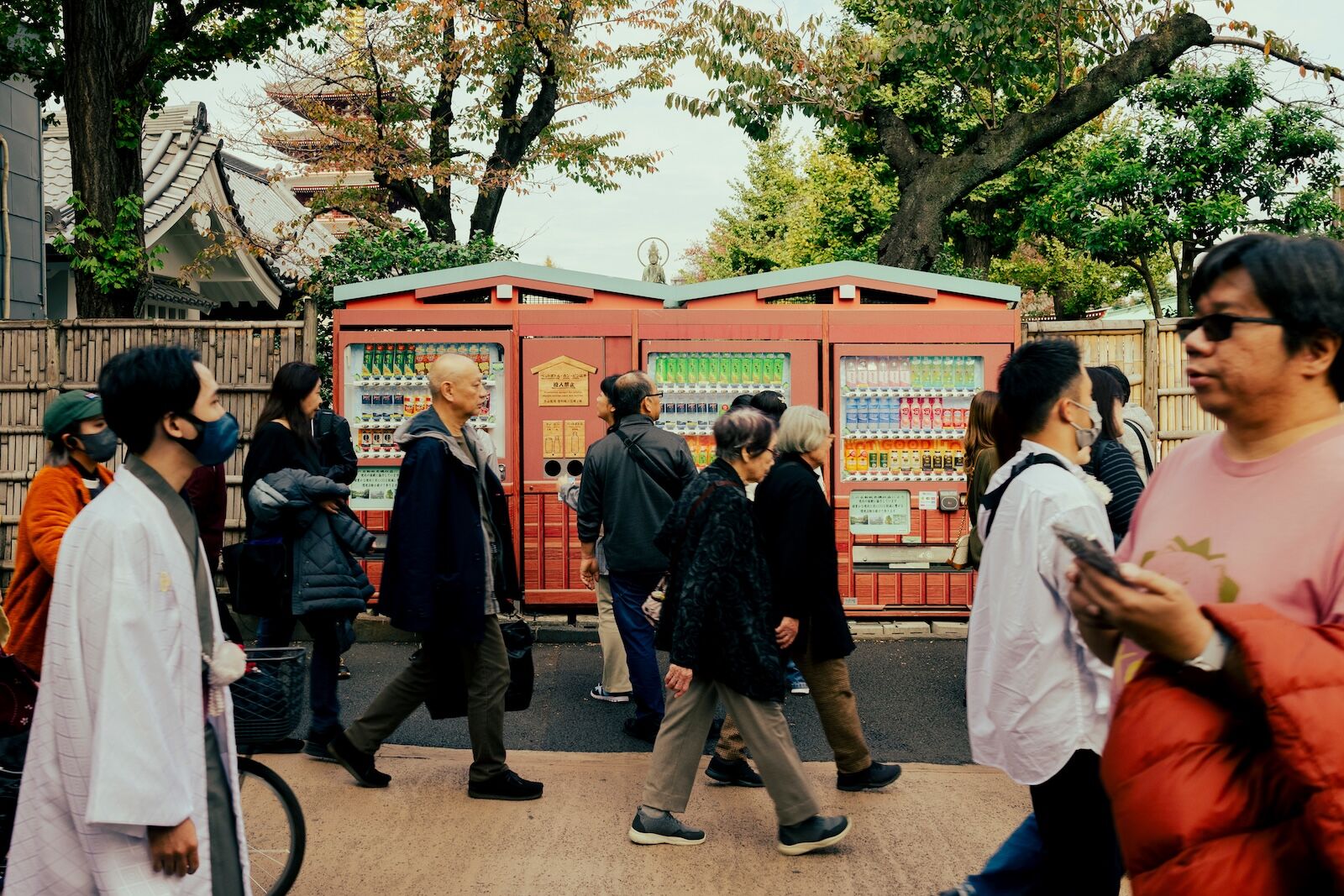
Even at Tokyo’s oldest temple, you’ll find vending machines. These ones are designed to blend in with the far-older buildings they coexist with. Photo: Tanner Bowden
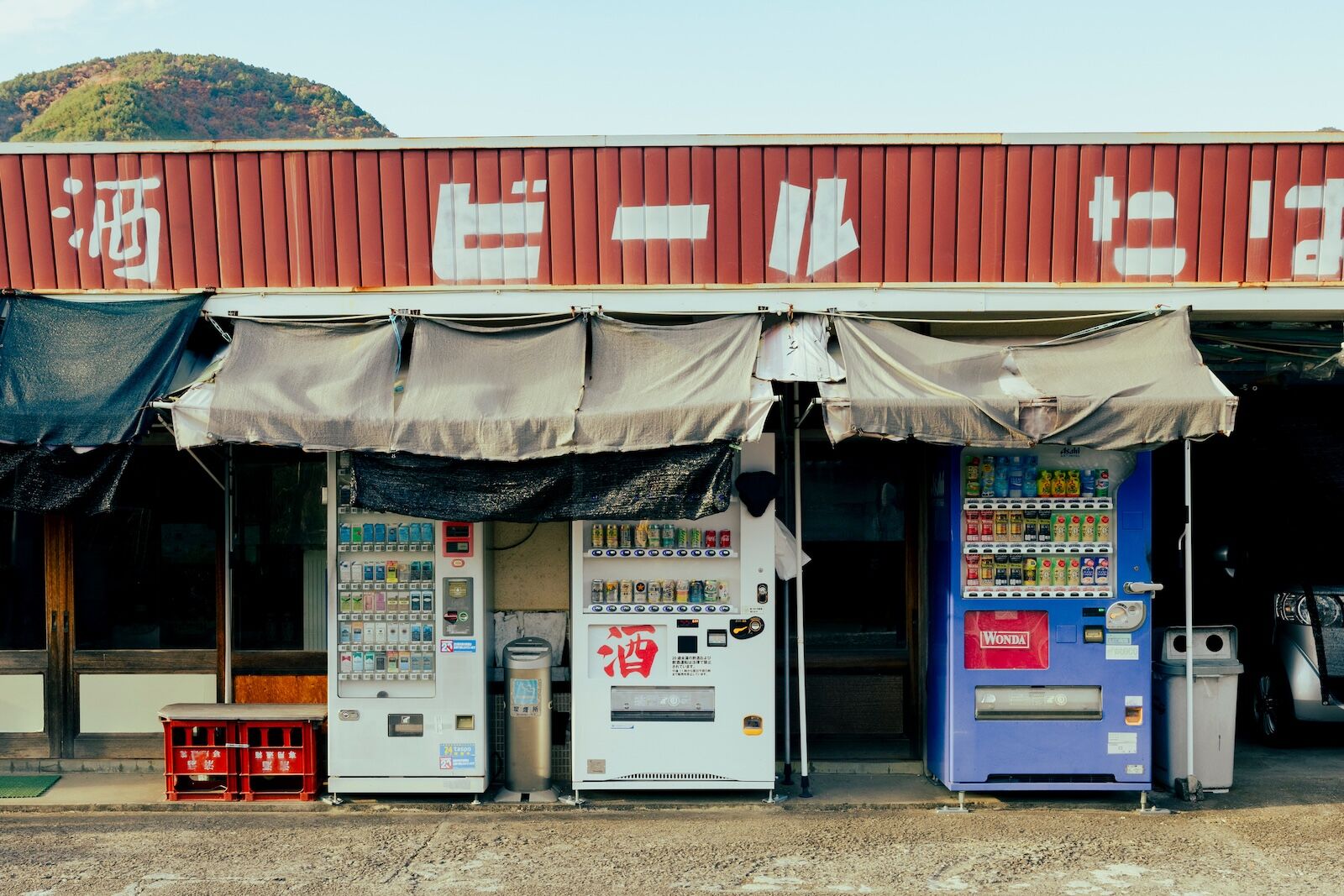
When the stores were closed in this small village on the Kii Peninsula, there was still a one-stop place for tea, coffee, beer, and cigarettes. Photo: Tanner Bowden
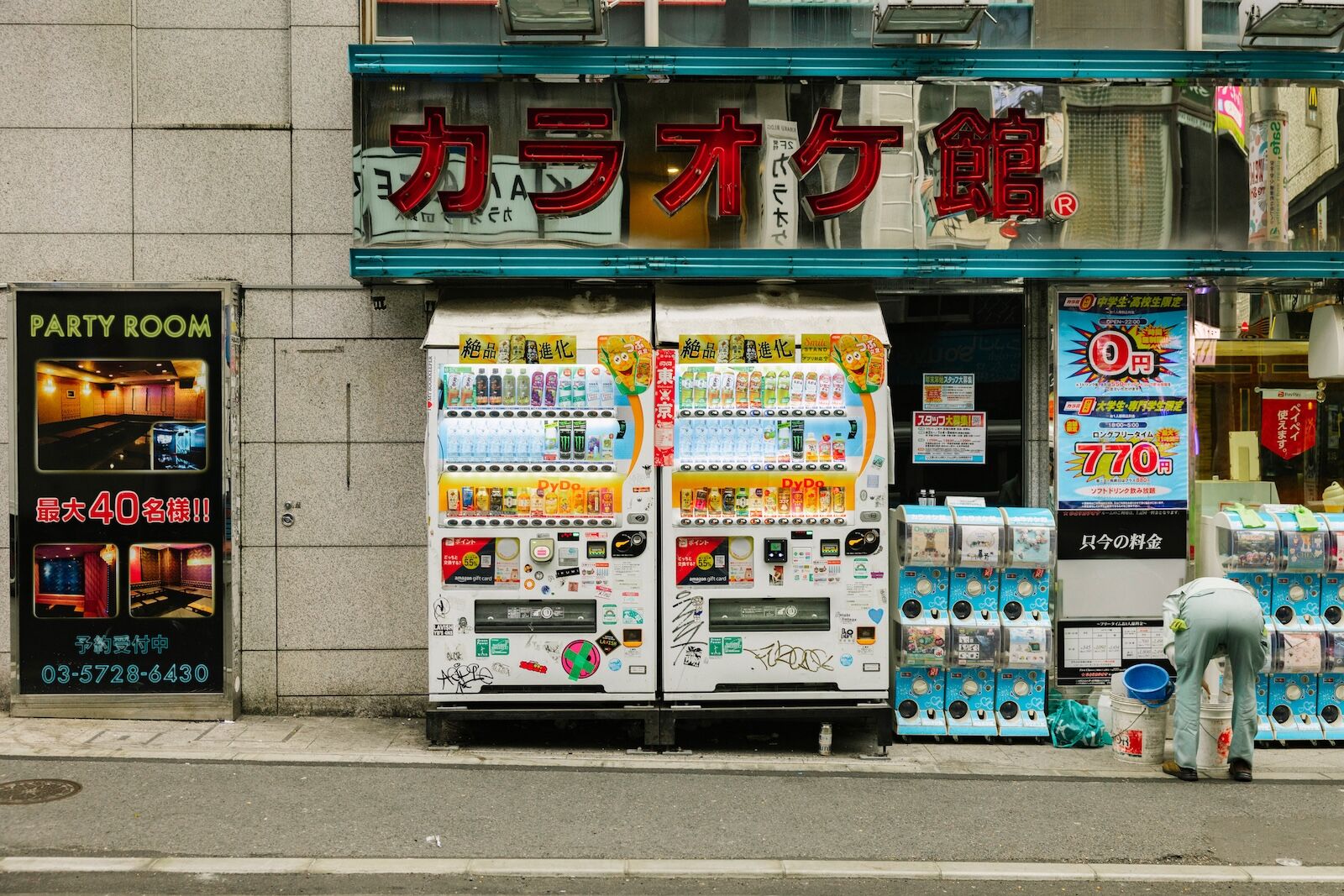
One of the reasons why vending machines are so common in Japan is because vandalism is uncommon. Even graffiti — except in the case of this pair located in the heart of Shibuya. Photo: Tanner Bowden